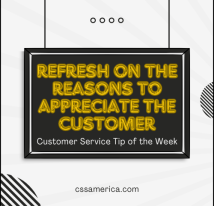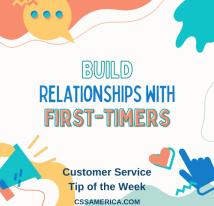A complaint is a gift. Okay, so the complainer is not always a “gift.” The customer’s delivery of the complaint is sometimes more like a stocking filled with coal than a vase filled with roses. But this is why we need to be able to differentiate the complaint from the complainer for a moment.
A complaint is feedback; it’s an opportunity to improve. It’s often an example of something 5 or 50 other customers have experienced, but they did not voice to you. Companies send out surveys, and many customers don’t respond. Some customers proactively provide real-time feedback; others will only share when asked, if even then.
It’s hard to learn from a lack of information.
So, a complaint is a gift because it provides information. It tells you what the customer experienced, perceived. It conveys who was involved, what happened or didn’t happen, what experiences didn’t meet expectations, what was too early or too late, what attitudes came across poorly, what products didn’t work, what policies were frustrating, and what processes were clunky or not self-evident.
In the moment, we need to deal with the complaint and the customer. But to make a complaint a gift, we need to revisit the complaint after the fact and identify what information was gained, what lesson was learned, and how we can apply those learnings moving forward.
Give yourself time to get over any negative emotions from the dust-up with the customer, and then glean what you can from what happened and the customer’s perspective on the experience. Use the complaint for continuous improvement.
Unpack the complaint to make it a gift.
Signup for FREE Tips! Contact Us More Resources for You Visit Our Home Page
























